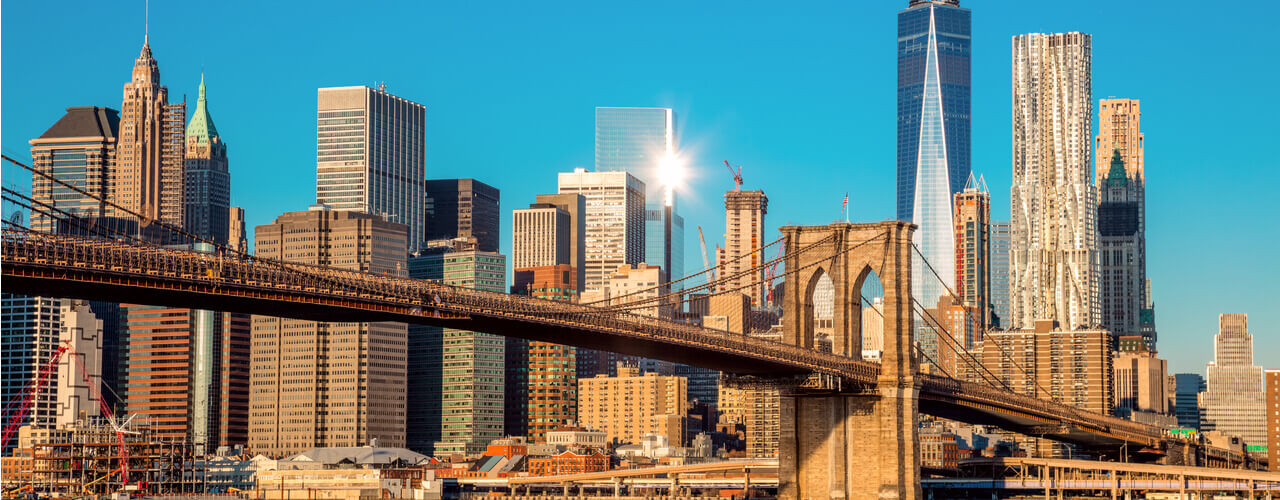At a time of high unemployment and other significant economic challenges, New York Gov. Andrew Cuomo announced a New Deal-level statewide improvement plan. During his four-installment 2021 State of the State address, the governor made a compelling case for optimism with respect to the economy of the state, as well as the wider northeast region.
The projects for a more prosperous future as outlined by the governor include:
- revitalizing the arts and entertainment sectors hardest hit by the pandemic
- making major moves toward a greener economy and long-term sustainability
- scaling up testing and the vaccine roll-out to encourage the reopening of office spaces in New York City, as well as the small businesses that support them
- making way for a new commercial district in West Manhattan
- an ambitious infrastructure upgrade and expansion program
Practical Plans to Safely Fast-Track Reopening New York Businesses in 2021
Most crucially, work continues on the reopening of businesses across the state and especially within the largest economic engine of the region. However, while the New York Forward reopening plan has made some progress, most industries continue to operate at significantly reduced capacity to prevent the spread of COVID-19. And, with rapid transmission still a major issue, the state has committed to prioritizing the quick scaling of a rapid testing network that would add a significant layer of protection for New Yorkers to be able to resume economic activity more widely.
To complement the expanded rapid testing network, the state will rely on technology partnerships to develop a mobile app that would allow for the confidential transfer and verification of both testing and vaccination data. In particular, the governor’s program aims to fast-track the reopening of businesses that involve large, dense gatherings that have not yet been able to reopen, even with reduced capacity.
What’s more, operators of more than 100 million square feet of commercial space in New York City have pledged to make market-rate diagnostic COVID-19 testing available to tenants in their buildings. Several leading commercial real estate firms are slated to join this partnership that’s dedicated to expanding asymptomatic testing — a critical step in controlling the spread of the virus and increasing workplace safety.
A New Commercial District in New York City
The Manhattan Midtown West Development Project will begin at the Empire Station Complex — composed of the brand-new Moynihan Train Hall and the soon-to-be revamped Penn Station — and extend east to Broadway and west to the Hudson. The investment, currently estimated at $51 billion, will create 196,000 jobs and a new, 140-acre Manhattan commercial district, which will include:
- A 1.2-million-square-foot expansion of the Javits Convention Center, scheduled for completion before the end of this year
- 14 building sites made available for the development of some 20 million square feet of new retail, commercial, and residential developments;
- 14 building sites for the development of some 20 million square feet of new retail, commercial and residential developments:
- The Phase 1 eastward expansion from 10th Ave. to 30th St. will create a path to the Moynihan Train Hall
- A proposed Phase 2 northward expansion would connect Pier 76 with the pedestrian bridge across 12th Ave
- A redevelopment of Pier 76 into a 5.6-acre expansion of Hudson River Park
- A long-overdue overhaul of the Port Authority Bus Complex, which will also add space for new commercial development
New York Infrastructure for the (New) Ages
One downside of a city that never sleeps is that it can be quite difficult to keep its underlying infrastructure in top shape. However, 2020 managed to slow down even the Big Apple. Recognizing the potential of great infrastructure projects to turn even barren deserts into economic engines, New York took advantage of the period of reduced traffic to accelerate projects across the state. Specifically, projects completed in New York during the COVID-19 slowdown include:
- A new arrivals and departures hall and a new concourse at LaGuardia Airport
- Rehabilitation of the L Train tunnel, which was completed six months ahead of schedule without shutting down service
- The $1.6 billion Moynihan Train Hall, which was delivered on budget and months ahead of schedule
- The new Buffalo Exchange Street Train Station
- A new RFK Bridge extension that relieves Harlem residential streets of significant through traffic
- The Empire State Trail, a 750-mile pathway from New York City to Canada, as well as from Albany to Buffalo
Now open! Moynihan Train Hall is located directly across from New York Penn Station at 8th Avenue in the historic James A. Farley Post Office Building.
To learn more, visit: https://t.co/JcMyhJdjIw pic.twitter.com/9HnzNtvCKo
— Amtrak (@Amtrak) January 14, 2021
Evoking the grandeur of FDR’s New Deal, the extensive infrastructure upgrade program presented by Gov. Cuomo will amount to a statewide investment of $306 billion. Highlights planned for the nearer future include:
- A $16 billion redevelopment and expansion of the much-maligned Penn Station. Originally designed to handle 250,000 passengers per day, it served as many as 600,000 people per day in 2019. And, with Moynihan Hall now ready to accommodate a diversion of the majority of Penn traffic, the old Station can now be transformed into a world-class transportation facility — with little to no disruption of service.
- Additional work on the new LaGuardia Airport roadway network, as well as the Delta state-of-the-art terminal and concourses on the airport’s east side.
- A much-needed modernization of JFK Airport.
- A $100 million investment in improving upstate airports.
- Kicking off a major, $51.5 billion Metropolitan Transportation Authority (MTA) 2020-2024 capital plan, which would bring about critical infrastructure maintenance, expanded transport capacity and improved accessibility.
Moynihan Train Hall is just the beginning.
We will turn to redeveloping Penn Station’s current cluster of catacombs into a world-class transportation facility and add 8+ new train tracks.
New York will keep building for future.#SOTS2021 pic.twitter.com/qy2e0BTtLD
— Andrew Cuomo (@NYGovCuomo) January 14, 2021
The New York Green Economic Recovery Program
In 2019, New York City ranked second for progress in urban sustainability, among the country’s 50 largest metropolitan areas. And now, plans outlined in the Governor’s State of the State address promise significant advancement toward long-term sustainable economic growth, which would make New York a global hub for green energy innovation, technology and employment. Proposals presented in the program include:
- Bringing the State’s total clean energy build-out to nearly 100 projects, with development focus on underutilized lands, such as former commercial or industrial sites and decommissioned electric generating sites
- 40 new community solar projects totaling 75 megawatts of renewable capacity, including 15 megawatts of paired storage by 2025
- Two new wind farms off the shore of Long Island estimated to yield 2,490 megawatts of carbon-free energy and add up to 10,900 megawatts in combination with the nearly 100 other clean power facilities currently operating and in development throughout the state
- An investment of more than $2 billion to replace the historic and severely underperforming transmission grid, of which an estimated 250 miles of transmission would be under construction in 2021 alone
- $20 million toward a new Offshore Wind Training Institute based at SUNY Stony Brook and Farmingdale State College, with plans to train the first phase of workers beginning in the summer of 2021
In the last few years, New York has taken major steps toward a cleaner energy supply and has even ranked among the most sustainably powered U.S. cities. However, even during the second-quarter lockdown in 2020 and with a significant slowdown across the board, the state saw just a 4.5% year-over-year dip in overall energy consumption. Clearly, investing heavily in staying ahead of schedule on its goals of 70% renewable-source electricity by 2030, as well as 100% zero-emissions electricity by 2040, is a particularly wise priority.
COVID is the existing threat — but climate change is the existential threat.
New York will launch the most aggressive green economy program in the country.#SOTS2021https://t.co/a6L7CrMRL9
— Andrew Cuomo (@NYGovCuomo) January 11, 2021













